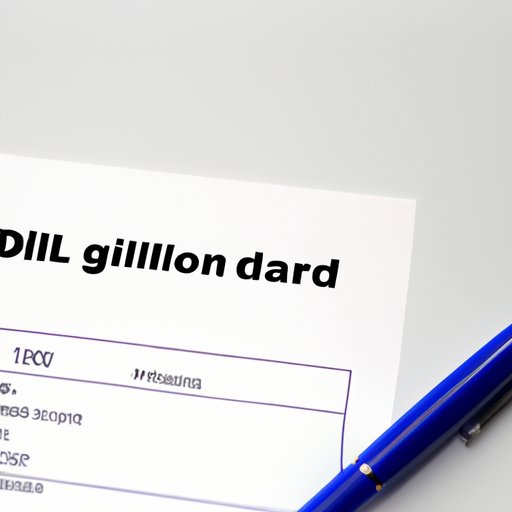Introduction
For anyone involved in shipping goods, a bill of lading is an essential document that helps ensure the successful delivery of the goods. But what exactly is a bill of lading, and why is it so important? In this comprehensive guide, we’ll break down everything you need to know about the bill of lading, from its basics to how to fill one out and common mistakes to avoid.
Unpacking the Basics of a Bill of Lading: A Comprehensive Guide for Beginners
At its most basic level, a bill of lading is a legal document that serves as a contract between the shipper and the carrier, outlining the terms and conditions of the shipment. The primary purpose of a bill of lading is to provide a receipt of goods shipped, as well as evidence of the contract of carriage between the shipper and the carrier.
The information contained in a bill of lading includes the names of the shipper and the carrier, the origin and destination of the shipment, a description of the goods being shipped, and any special instructions or handling requirements. There are several different types of bill of ladings, depending on factors such as the mode of transportation and the terms of the shipment contract.
The Importance of a Bill of Lading in International Trade: Explained
In international trade, a bill of lading is a critical document for several reasons. Firstly, it’s essential for customs clearance to have a bill of lading as proof of ownership of the goods being shipped. Secondly, it provides a record of the shipment’s condition at the time of loading, which can be important in the event of any disputes over damage or loss during shipment. Lastly, the bill of lading serves as a receipt for the goods, proving that they’ve been loaded on the intended vessel and are on their way to the destination.
How to Fill Out a Bill of Lading: A Step-by-Step Tutorial for Shipments
Filling out a bill of lading can seem like a daunting task, especially for those who are new to shipping. However, it’s an essential step to ensure that the shipment is successful. The key to filling out a bill of lading is to follow the instructions carefully and pay close attention to detail.
The sections of a bill of lading include the shipper’s name and address, the consignee’s name and address, the description of the goods being shipped, the weight and dimensions of the shipment, and the shipping terms and conditions. It’s crucial to ensure that each section is filled out accurately to avoid any delays or disputes.
Types of Bill of Ladings Explained: Which One Do You Need?
There are several types of bill of ladings, each with its specific use and purpose. For example, an ocean bill of lading is used for shipments that are being transported by sea, while an air waybill is used for air cargo shipments. There are also straight bill of ladings, order bill of ladings, and negotiable bill of ladings, each with its own set of rules and requirements.
When choosing the right type of bill of lading for your shipment, it’s important to consider factors such as the mode of transportation, the terms of the shipment contract, and any specific requirements or regulations for the destination country.
The Role of a Bill of Lading in Freight Transportation and Why It Matters
In freight transportation, a bill of lading plays a critical role in ensuring the timely and successful delivery of goods. It serves as a contract between the shipper and the carrier, outlining the terms and conditions of the shipment. The bill of lading is also a critical document for tracking and tracing the shipment, providing information on the shipment’s location and expected delivery date.
For all parties involved in the shipment, including the shipper, the carrier, and the consignee, having a copy of the bill of lading is crucial to ensure that everyone is aware of the shipment’s terms and conditions. It also provides a record of any damages or losses that may occur during shipment, ensuring that all parties are aware of their obligations and responsibilities.
Common Mistakes to Avoid When Using a Bill of Lading for Shipping
While filling out a bill of lading may seem simple, there are several common mistakes that can cause delays or disputes during the shipment process. One of the most common mistakes is providing incomplete or inaccurate information when filling out the bill of lading, such as misspelling the consignee’s name or providing an incorrect weight or volume of the shipment. Other mistakes include failing to follow specific regulations for the destination country or not providing the necessary documentation for the shipment.
To avoid these mistakes, it’s important to carefully review the requirements for the shipment and ensure that all information provided in the bill of lading is accurate and complete. It’s also helpful to work with experienced professionals, such as freight forwarders or shipping agents, to ensure that all regulations and requirements are met.
Conclusion
Whether you’re new to the shipping industry or an experienced logistics professional, understanding the bill of lading is essential to ensure the successful delivery of goods. By following the guidelines outlined in this comprehensive guide, you can ensure that your shipments are properly documented, and all parties are aware of their obligations and responsibilities. With this knowledge, you can navigate the complex world of shipping with confidence and success.
